With so many courthouse functions moving online, more physical space opens up in the building. The justice community needs to think carefully about how that extra space can and should be allocated. This section provides examples of new spaces to consider in a hybrid courthouse. It includes a set of principles and practices to implement DIY design modifications as well as tips for working with an architect on larger renovations.
New Spaces of Justice
Court Resource Center
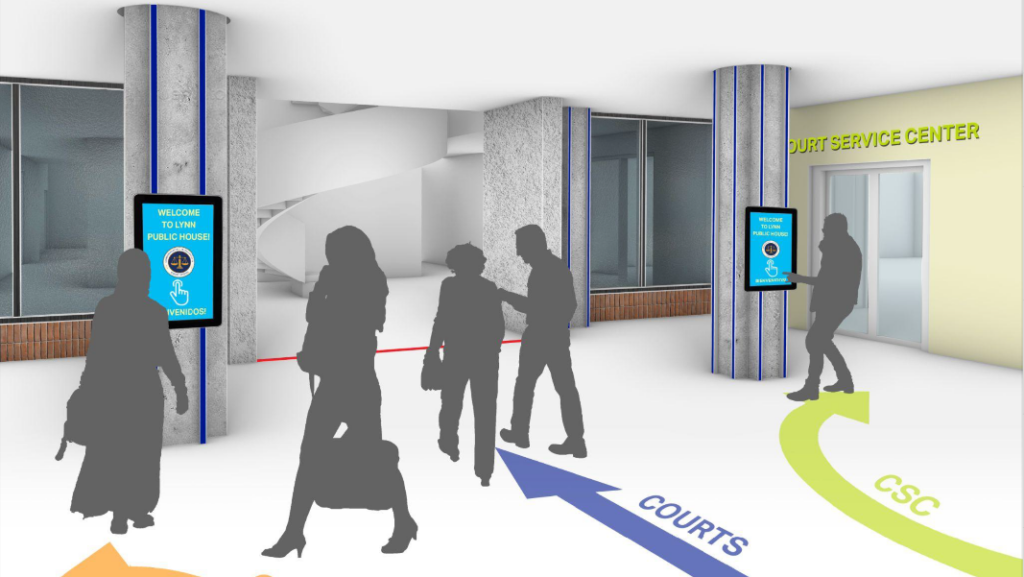
Purpose: navigation, education
Description: a court resource center helps people navigate the complexities of the legal sytem. It can help people understand where to go in the building, what they can expect before, during, and after their time there, connect them with legal aid and other organizations, and provide educational resources.
Includes: informational screens and/or posters, help desk, maps and schedules of the courthouse
Restorative Justice Rooms
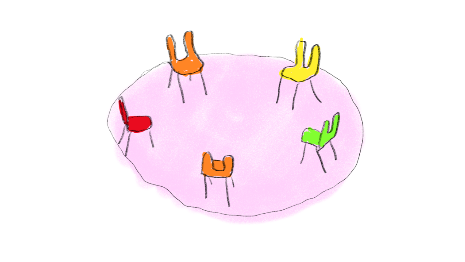
Purpose: alternative justice
Description: restorative justice can take place through facilitated meetings between victims, offenders and other people. Having a comfortable meeting space to hold restorative justice meetings can aid in the process and make all participants feel safe and heard.
Includes: comfortable, flexible seating, soft textures, plants
Legal Library
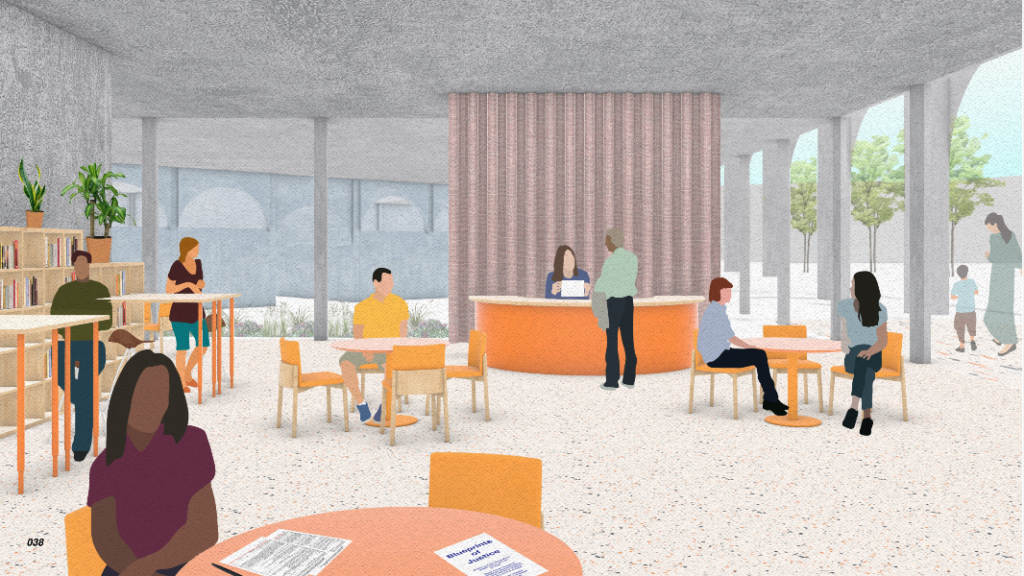
Purpose: education
Description: legal libraries allow self-represented litigants to do research that can help their case. Some courthouses already have legal libraries, but even so, the design should be carefully considered. Are library materials easy to access? Do people have comfortable spaces to sit and read? Is a staff member available to assist?
Includes: library materials and shelving, comfortable tables and chairs, librarian’s counter/ help desk
Mediation Rooms
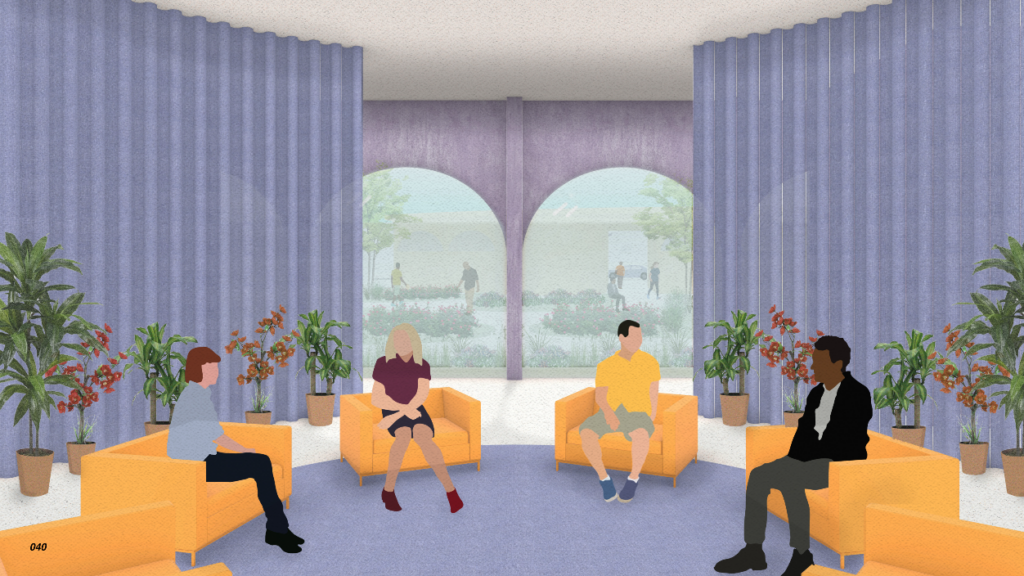
Purpose: dispute resolution
Description: mediation rooms facilitate the dispute resolution process between two parties and a neutral third party. These rooms can vary in size, but should be private, secure and make all parties feel comfortable.
Includes: comfortable table and chairs for three or more people, computer and printer, whiteboards, privacy curtains
Technology Center
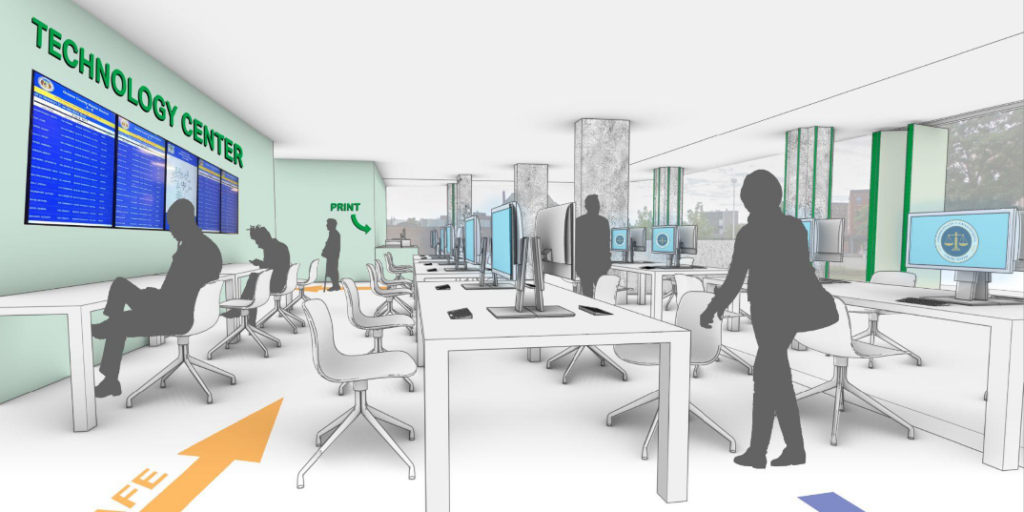
Description: setting up a technology center is especially important for people who may need to attend a virtual hearing or connect with other virtual legal resources but who do not have access to proper equipment or Internet.
Includes: desktop computers, printers/scanners, comfortable desks and chairs, informational posters, privacy booths
These are just some examples of new spaces of justice, but there are many more. If you are a designer or member of the justice community who has worked on or implemented a new space of justice either in a courthouse or virtually, please reach out! We would love to feature your work so that others can learn from it.